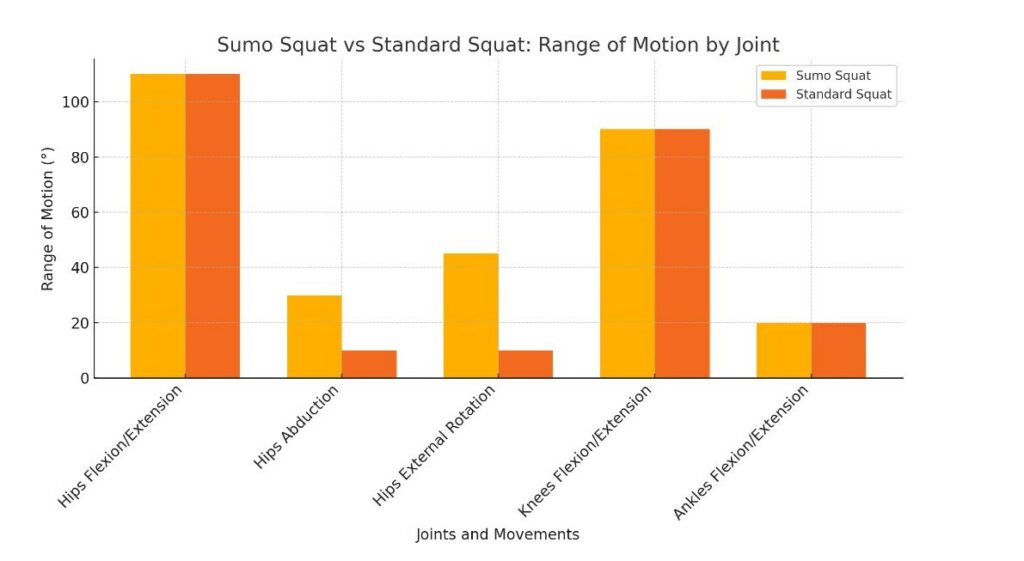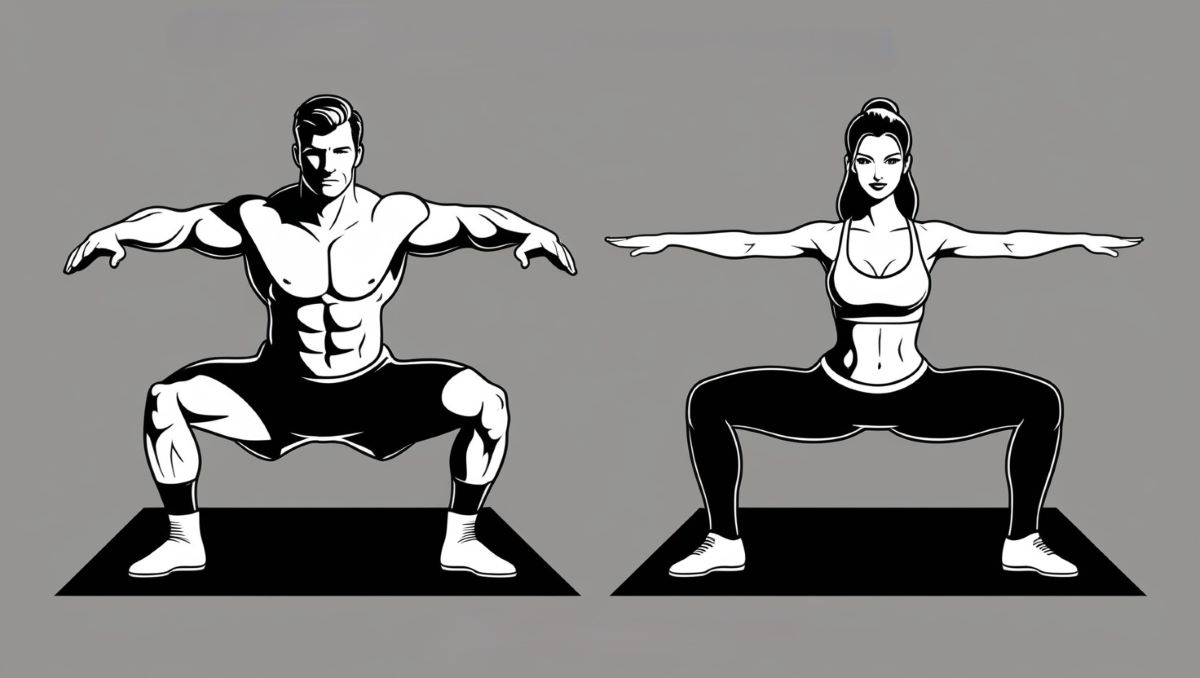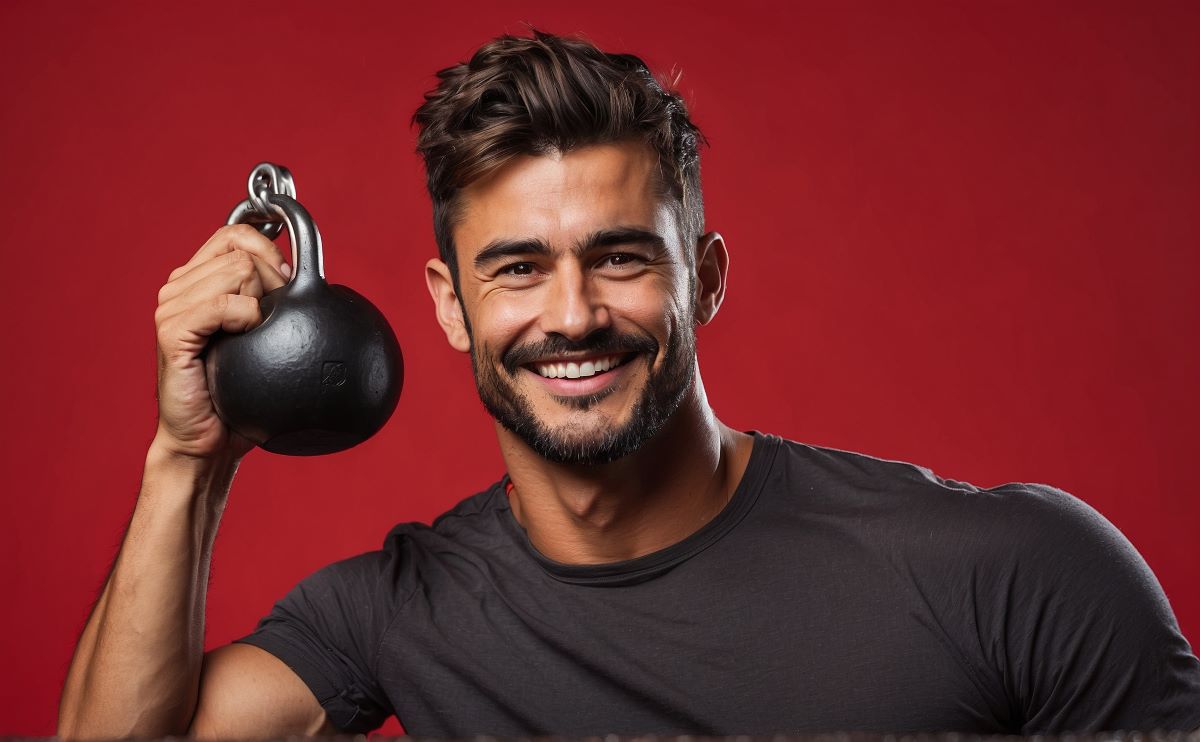Let me tell you, if there’s one exercise that truly makes you feel the burn in all the right places, it’s the sumo squat. I mean, my glutes? They were screaming at me the first time I tried it. But in that kind of “you’ll thank me later” way, you know? The gluteus maximus is the star of the show here, taking on most of the workload like it’s trying to prove a point. It’s like the unsung hero of leg day that finally gets its spotlight—and trust me, it doesn’t disappoint.
And then, of course, there are the quads. They’re like your trusty sidekicks, running down the front of your thighs and getting in on the action without making too much noise. But don’t let them fool you—they’re working hard. The rectus femoris, vastus this and vastus that, all of them are pulling their weight. It’s like a whole squad effort, and your legs definitely feel it.
The hamstrings, though? They’re the quiet workers. Not front and center, but always there, every single rep. It’s like they’re just hanging out in the background, making sure things keep running smoothly. And let’s not forget about the calves, those little stabilizing champs that you don’t think about until you’re halfway through the set and suddenly, you feel it. They’re like the friends who hold your ankles and knees together when everything else feels like it’s about to give out.
But what really surprised me was how much my core had to get involved. You think squats are just for your legs until you’re in that upright sumo squat position, and your core is fighting to keep your chest up. It’s like a balancing act between strength and stability, and honestly, it makes you appreciate your body’s ability to pull everything together. Have you ever thought about how many muscles are working at once just to keep you from tipping over? It’s wild, right?
Table of Contents
What are the engaged muscles in the Sumo Squats workout?
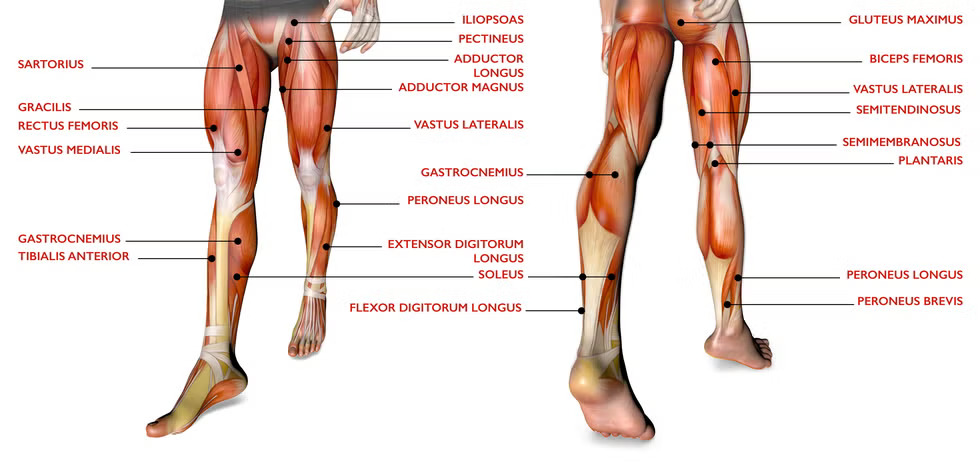
1. Glutes (Gluteus Maximus, Medius, and Minimus)
- Primary Muscle: The gluteus maximus is heavily activated during sumo squats, driving the movement and helping with hip extension.
- Secondary Muscles: The gluteus medius and minimus assist in stabilizing the hips and pelvis throughout the squat.
2. Quadriceps
- This group of muscles, located at the front of your thighs, includes the rectus femoris, vastus lateralis, vastus medialis, and vastus intermedius. These muscles are responsible for knee extension and play a significant role in the upward phase of the squat.
3. Hamstrings
- The hamstrings, located at the back of your thighs, act as secondary movers. They help control the descent during the squat and stabilize the knees.
4. Adductors (Inner Thighs)
- Due to the wider stance in sumo squats, the adductors (inner thigh muscles) are engaged to a greater degree than in traditional squats, helping with stabilization and leg movement.
5. Calves (Gastrocnemius and Soleus)
- The calf muscles help stabilize the ankles and support balance during the movement, especially at the lower end of the squat.
6. Core Muscles
- The abdominal muscles, obliques, and lower back are activated to maintain an upright torso and prevent the body from tipping forward. These muscles work together to stabilize the spine and support the weight throughout the movement.
7. Hip Flexors
- The hip flexors assist in the squatting motion, particularly when lowering and raising the body during the squat.
What are the benefits of a Sumo Squat workout?
Glute Magic: Let me tell you, if you’ve ever felt like your glutes weren’t pulling their weight—sumo squats will change that. I remember the first time I added them to my workout, my backside was on fire in the best way possible. It’s like they woke up from a deep sleep and decided, “Alright, let’s show up for leg day.” The gluteus maximus is basically the star of the show here. I mean, who doesn’t want a more powerful posterior?
Inner Thighs Get Some Love: Ah, the inner thighs—the forgotten muscles in most workouts, right? But with sumo squats, they get the attention they deserve. You know that awkward moment when you realize your jeans are a little tighter, but in a good way? Yep, blame the sumo squats for that. They target your adductors, and trust me, you’ll feel muscles you didn’t even know existed. It’s like discovering a hidden gem in your own body.
Quad Power: So here’s the thing—quads don’t get the credit they deserve. They’re always working, but you never really notice them until you do a sumo squat and suddenly, they’re front and center. It’s like they’ve been in the background, waiting for their moment to shine. And boy, do they shine when you lower into that wide stance. You’ll feel them burning and thanking you later when you can’t get off the couch.
Core Stability Like Never Before: No one really talks about how much your core gets in on the action with sumo squats. But oh, it does. It’s like the secret behind-the-scenes crew holding everything together. I always catch myself wobbling a little, which is my body’s way of saying, “Hey, your core is working harder than you think!” And that’s where the magic happens—feeling that unexpected full-body challenge.
A New Level of Balance: Doing sumo squats feels like a balancing act—literally. It’s like you’re trying to find your center while also pushing your limits. The wide stance really challenges your balance, especially when you’re holding weight. I’ve had moments where I was so off-balance that I nearly toppled over, only to catch myself at the last second. It’s in those wobbly moments that you really find your strength.
More Mobility, More Freedom: Sumo squats have this way of unlocking parts of your body that traditional squats don’t touch. After a few weeks of adding them to my routine, I noticed I could drop into a squat lower and move through my workouts more fluidly. It’s like suddenly, your hips feel freer, and your body moves in ways that make you wonder, “Why didn’t I start doing these sooner?”
Mind-Muscle Connection: Here’s the thing I didn’t expect—sumo squats make you think. Like, really think about what muscles are doing the work. It’s almost meditative, the way you have to focus on every part of the movement. I’m always adjusting my feet or straightening my back, and in those moments, it’s like I’m more connected to my body than ever before. Have you ever noticed how much focus goes into one single rep?
How to do sumo squats?
The Sumo Squat workout is so easy. Here is how to do it step-by-step:
What are the best sumo squat variations?
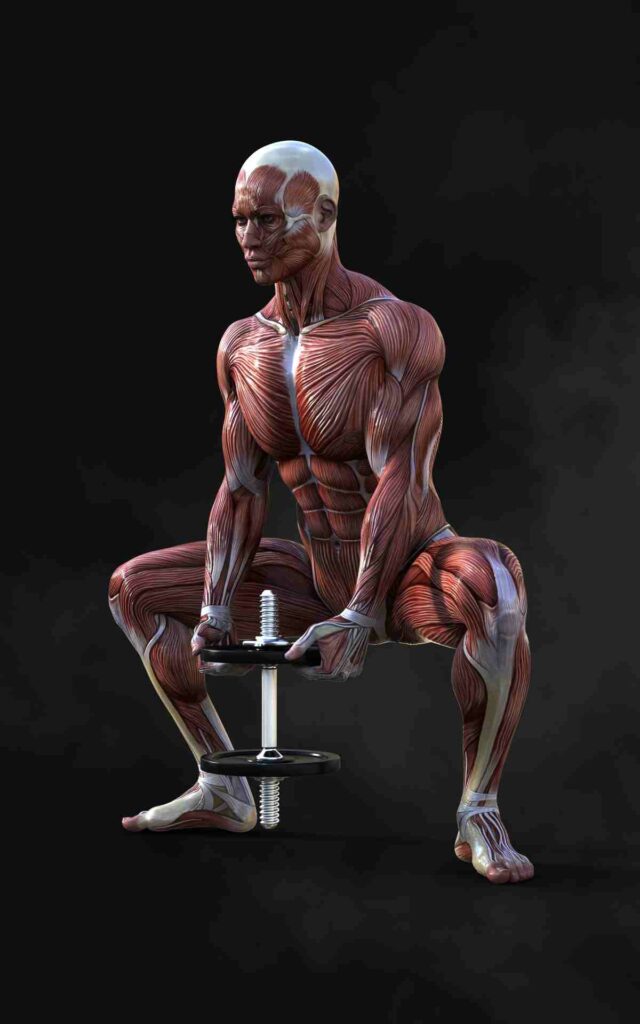
The Goblet Sumo Squat – Like Holding a Secret Weapon: You’re holding a dumbbell close to your chest, and suddenly, it’s like you’ve unlocked a new level of intensity. The weight in your hands makes everything feel a little more real. I remember gripping that dumbbell for the first time, thinking, Is this thing a shield, or am I just holding on for dear life? But honestly, it’s kind of like carrying a secret weapon.
It adds a whole new layer of challenge without completely wrecking your form. If anything, it forces you to be more deliberate, more controlled. It’s a perfect next step once your body’s gotten a bit too cozy with the regular sumo squat.
The Sumo Pulse Squat – A Burn Like No Other: This one—man, it’s sneaky. You think it’s going to be easy because you’re not doing full reps, but after about ten pulses, your legs are sending an SOS. It’s like you’re stuck in that one moment, just hovering in the burn zone, waiting for relief that never quite comes.
I’ll be honest—when I first tried this, I swore my legs were plotting a rebellion. But there’s something oddly satisfying about finding your limit and then just staying there for a bit. It’s like the squat version of meditation, except instead of peace, you’re chasing that deep, deep burn.
The Sumo Squat with Calf Raise – Two for the Price of One: So, one day I decided to add a calf raise at the top of my sumo squat—why not? My legs were already crying, so might as well get the most out of it, right? Let me tell you, this variation feels like you’re getting a two-for-one special.
You drop into your squat, feeling that familiar tension in your thighs and glutes, and just when you think you’re done, bam—you push up onto your toes. It’s like the squat’s way of reminding you, “Oh, you thought you were done? Not even close.” But the payoff? Calves that feel like they could power you up a mountain.
The Resistance Band Sumo Squat – Now We’re Talking: Throw a resistance band around your thighs, and suddenly it’s like the ground itself is fighting back. I remember trying this for the first time, thinking it was just going to be a little extra resistance. Nope. The band turned what used to be a simple movement into a full-on battle.
It’s like your legs are saying, “We’ve done this before,” but the band’s there to remind you, “Not like this, you haven’t.” And that’s the beauty of it—it turns a familiar move into something completely new. Plus, it really forces you to focus on keeping your knees pushed out, so your form doesn’t fall apart halfway through.
The Kettlebell Sumo Deadlift – A Whole New World: Okay, so technically this is more of a deadlift than a squat, but it’s close enough to sneak onto this list. There’s something about grabbing that kettlebell and standing over it like you’re about to lift a treasure chest.
The first time I tried it, I felt like I was in some action movie—ready to heave this heavy thing up and save the day. The best part? It hits your hamstrings and glutes in a whole new way, reminding you that the sumo stance isn’t just for squats. It’s like your legs are discovering muscles they didn’t even know existed.
Which is Better: Squat or Sumo Squat?
It’s like asking whether you prefer coffee or tea, or whether you’re more of a cat or a dog person. The truth is, both the regular squat and the sumo squat are powerhouse moves for your lower body, but which one’s better? Well, like with most things in life, the answer is a little messy and totally depends on you. Let’s dig into this a bit more because it’s honestly more about what you’re looking for than finding a definitive winner.
Training History: The Squat’s Big Brother Energy
I still remember the first time I tried to squat with any real intention—knees buckling, back hunched like I was hiding a secret. It was a disaster, but hey, we all start somewhere, right? The regular squat, let’s be real, is like the big brother of all lower-body exercises.
If you’re new to strength training, the regular squat is the foundation—the thing you learn to do before you even think about fancy variations like the sumo squat. It’s like learning to ride a bike without training wheels before you hop onto a mountain bike. So yeah, if you’re just getting started, I’d say stick to the classic for now. It’ll teach you how your body should move when you’re lifting.
Muscle Recruitment: The Battle of the Quads vs. the Inner Thighs
Now, this is where things get interesting. Both squats work the big players—glutes, quads, hamstrings—but they don’t quite play by the same rules. With the regular squat, it’s like your quads are front and center, taking most of the load. I can always feel the burn deep in my thighs the day after a good squat session.
But when you switch to the sumo squat, everything shifts. Suddenly, your inner thighs—those adductors—are screaming for attention. It’s almost like you’ve woken up a muscle group that’s been napping for years. So, what’s your goal? Bigger quads? Stick with the regular squat. Want those inner thighs to start pulling their weight? Sumo squats are your new best friend.
Comfort: The Unexpected Zen of Sumo Squats
Here’s where it gets personal. There’s something about the sumo squat that just feels… right, especially if you’re like me and your body’s a bit stiff in the hips. With that wide stance, your back stays more upright, which means less of that weird, hunched-over feeling you sometimes get in a regular squat. Honestly, for me, the sumo squat feels like giving my spine a little love while still getting in a killer workout.
But then again, some people love that forward lean in a regular squat—it gives them this grounded, powerful feeling, like they’re bracing for a storm. It’s all about what feels more natural for your body. And hey, if you’re not sure, why not give both a shot?
So… Which Is Best?
I hate to be that person, but—yeah, it depends. I know, I know, that’s the last thing you wanted to hear. But it’s true! Do you want stronger quads or inner thighs? Do you feel more stable in a wide stance, or does the classic squat give you that rush of power you’re looking for? The answer lies in experimenting, playing around with both, and figuring out which move your body loves more.
Spoiler alert: it might not be the same every day. Some days I’m all about the sumo squat, feeling like a grounded warrior. Other days, I need the challenge and simplicity of a regular squat. What about you—are you team sumo or team regular? Or maybe, just maybe, you’re both.
Joints and Ranges of Motion: The Technical Stuff (If You’re Into That)
For the biomechanics nerds out there, both squats engage your hips, knees, and ankles, but in slightly different ways. And yeah, the range of motion will vary depending on your flexibility and build. But let’s be real, at the end of the day, it’s all about what feels right in your body.
Sure, you can study the mechanics until your eyes glaze over, but if one squat makes you feel strong, stable, and centered—does anything else really matter?
The following graph explains some key points:
